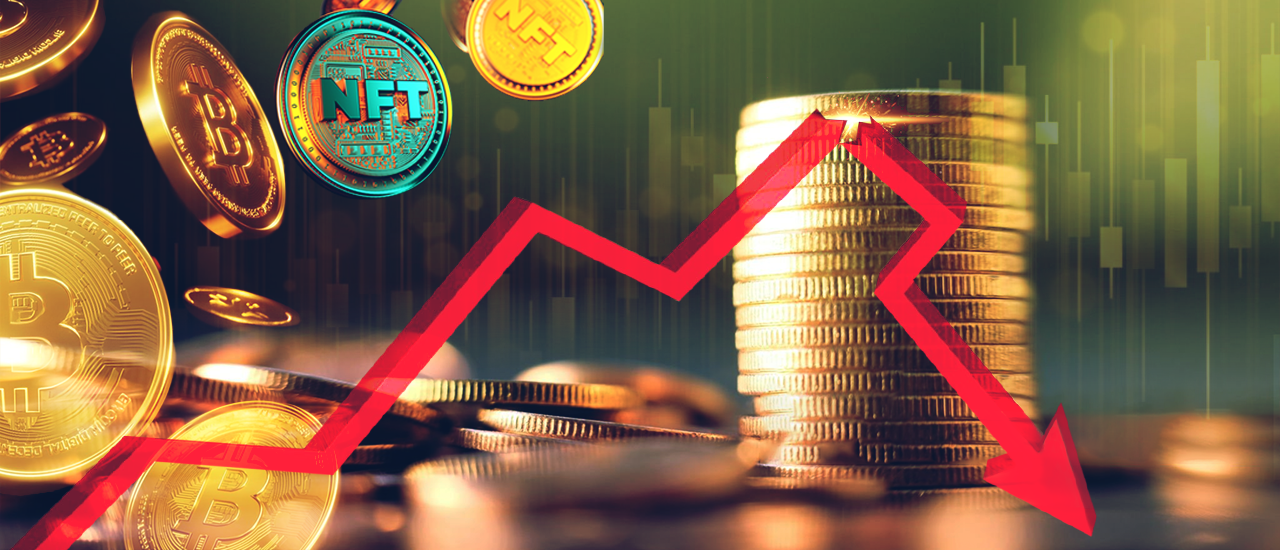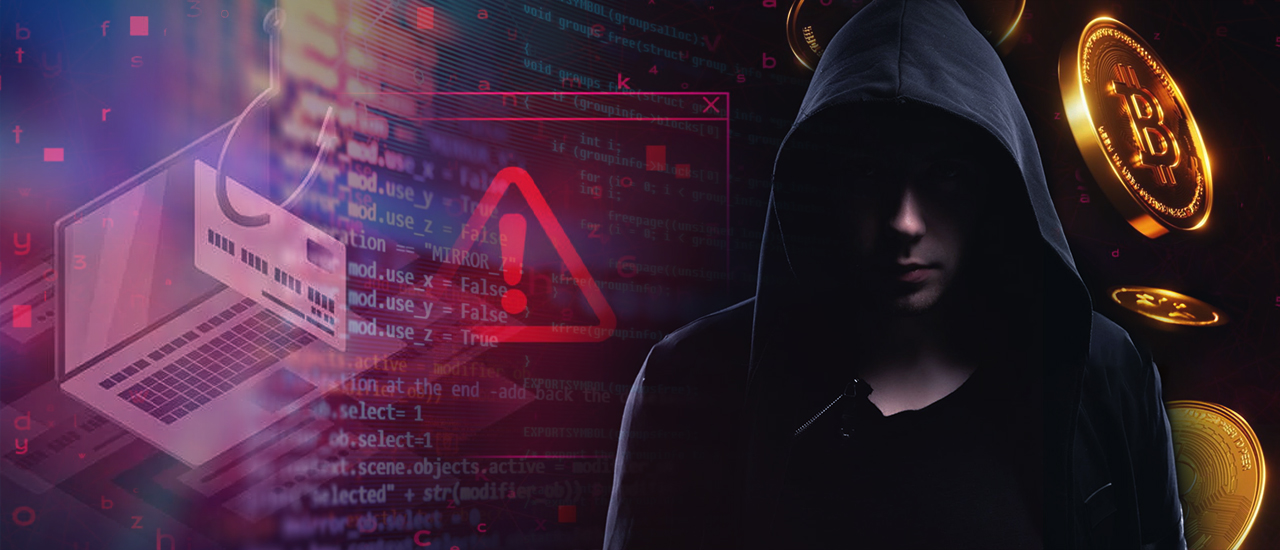Table of Contents
The unregulated nature of the crypto space has spawned a wide range of scams, one of which is the rug pull scam. Rug pulls are a type of crypto scam where project developers attract investors with the promises of huge returns on a lucrative new crypto or NFT project, only to abandon the initiative abruptly, disappearing with the investors’ funds in thin air.
This nefarious scheme has seen an alarming rise in recent years, resulting in staggering financial losses for unsuspecting investors.
This nefarious tactic has seen an alarming rise in recent years, resulting in staggering financial losses for unsuspecting victims. Chainalysis reports that in 2021, rug pulls accounted for a staggering $2.8 billion, or 37% of all cryptocurrency scam revenue that year.
As blockchain technology and digital assets see increased growth and mainstream adoption, expanding the NFT market and decentralized finance (DeFi) ecosystems, malicious actors are becoming more active in exploiting vulnerabilities and defrauding investors through rug pulls.
Rug pull scams can have devastating consequences. Stories about individuals losing their life savings to rug pulls, leaving them with worthless assets and shattered dreams. The anonymity and lack of regulation in the crypto space only exacerbate the risks, making it crucial for potential investors to exercise extreme caution and conduct thorough research before investing their hard-earned money.
In this article, we’ll delve into the intricacies of rug-pull crypto scams, dissecting their methods, exploring some real-world cases, and providing actionable steps to safeguard your investments.
What is a Rug Pull Crypto Scam?
At their very core, rug-pull crypto scams are devious schemes orchestrated by dishonest project developers in the cryptocurrency and NFT space. Their methods involve luring in unsuspecting investors through aggressive marketing campaigns, hyping up a new crypto project or NFT collection with elaborate promises of lucrative returns or exclusive benefits.
Once they gather a substantial amount of investor funds, the rug pull scam unfolds in one of two ways: a hard rug pull or a soft rug pull.
Hard Rug Pulls: Malicious from the Start
In a hard rug pull, the project developers initiate the project with malicious intent, deliberately coding nefarious backdoors into the project’s smart contracts. These backdoors enable bad actors to exploit the system and steal investors’ funds at an opportune moment. Once the rug pull is executed, the developers disappear with the stolen funds, leaving their victims with worthless assets.
Soft Rug Pulls: The Long Con
Soft rug pulls, on the other hand, are more insidious and play out over an extended period. In these scams, the project developers initially present a facade of legitimacy, allowing the project to gain traction and attract a dedicated community of investors.
However, after gathering significant investor money, the core development team starts executing their exit strategy. This often involves rapidly selling off their own share of the project’s tokens or NFTs, causing a massive price crash and rendering the assets virtually worthless.
Regardless of the method, both types of rug pulls result in investor losses.
Notable Rug Pull Incidents
The crypto world has witnessed many high-profile rug-pull scams, each with a trail of devastation and lost investor funds in its wake. Some of the most notorious rug pull incidents include:
- Theodex (2021): In one of crypto's largest rug pulls, Turkish exchange Thodex abruptly shut down its operations in April 2021, trapping an estimated $2-10 billion from 391,000 investors. Days before the shutdown, Theodex offered 150 Dogecoin to every new signup, luring in new funds.
- Frosties NFT (2022): Another case that garnered significant attention was Frosties, an NFT project that raised $1.1 million from investors and abruptly shut down, transferring the funds to the founders’ personal wallets. The U.S. Department of Justice charged the founders of the Frosties NFT project with conspiracy to commit wire fraud and money laundering.
- Evolved Apes NFT (2021): An anonymous team of developers known as Evil Ape came up with a falsely advertised NFT collection called the Evolved Apes. This bogus NFT project consisted of 10,000 avatars that were supposed to be part of a fighting game. However, the game was never developed, the founders took off with $2.7 million of investors’ money, while the NFTs can still be found in circulation on OpenSea, an NFT marketplace.
- AnubisDAO (2021): Another huge rug pull scheme was the AnubisDAO project, defrauding investors of about $60 million. The developers proposed a decentralized currency backed by a collection of assets. After receiving overwhelmingly positive support from investors, the developers drained $60 million from the liquidity pool just 20 hours into the launch, disappearing without a trace.
-
- DeFi100 (2020): The DeFi100 project was one of the most audacious rug pulls in the decentralized finance (DeFi) space. It was launched in 2020 with promises of being an audited, community-driven DeFi incubator fund. DeFi100 managed to raise over $32 million from investors. However, just hours after the token generation event (TGE) ended, the anonymous developers drained the liquidity pool of all funds, leaving a tasteless message for the investors.
Later investigations found that the developers attempted to transfer the stolen Ethereum to the Tornado cash mixer. Despite claiming robust smart contract audits, DeFi100’s code contained backdoors allowing rug pull theft.
The Anatomy of Rug Pull Crypto Scams
Scammers use a wide range of deceitful tactics to orchestrate the perfect rug-pull scams, so they can lure more unsuspecting victims and siphon off their investments. Here’s a deeper look to understand the intricate mechanics behind these scams:
Fueling FOMO: Social Media Hype and Influencer Marketing
One of the primary weapons in a rug-pull scammer’s arsenal is the strategic use of social media hype and influencer marketing. They run coordinated campaigns on platforms like X (Twitter), Discord, and Telegram. Scammers ensure to create a frenzy of excitement around their crypto project or NFT collection.
Scammers also enlist influencers with large followings to promote their projects, leveraging their credibility and reach to amplify the hype further and instill a sense of fear of missing out (FOMO) among potential investors. This artificial buzz can be incredibly enticing, encouraging individuals to invest without conducting proper research.
The Backdoor to Theft: Exploiting Smart Contracts
Most rug pull scams work by exploiting smart contracts. These self-executing contracts govern the rules and transactions within a decentralized application (dApp) or cryptocurrency project. Scammers with the required technical expertise can deliberately add vulnerabilities or backdoors into these smart contracts, allowing them to drain the project’s liquidity pool or just steal the investors’ funds at an opportune moment.
These exploits can be challenging to detect, even for experienced auditors, as they are often cleverly obfuscated within the project’s code. Once the rug pull is executed, the stolen funds are typically laundered through a series of complex transactions across multiple blockchains, making it increasingly difficult for the authorities to trace and recover the stolen funds.
The Allure of Unrealistic Promises and Exclusivity
Another common tactic rug pull scammers use is the promise of unrealistic returns or exclusive benefits. These promises are curated to appeal to the human greed and FOMO of potential investors, luring them into parting with their hard-earned money.
Scammers also heavily promote their projects as groundbreaking innovations that will revolutionize the industry as we know it. They may also offer astronomical returns on investment or exclusive access to limited-edition NFTs, high-end lounges, private islands, etc. They may also accompany their claims with slick marketing materials and a polished website, further duping their victims into thinking that their scam operations are legitimate.
Anonymity and Lack of Transparency: Breeding Grounds for Deception
The decentralized nature of the crypto world and the anonymity it offers can be a double-edged sword. On one hand, it fosters innovation and privacy. On the other hand, it also creates an environment ripe for scams and fraudulent activities.
Rug pull scammers operate under the cloak of anonymity, using pseudonyms and untraceable accounts to conceal their true identities. This lack of transparency makes it challenging for investors to verify the legitimacy of the project team or the claims these scammers make.
Apart from that, scammers usually hide crucial details about their project, such as token distribution details, or allocation of funds raised during an initial coin offering (ICO). This lack of transparency can breed mistrust and ultimately lead to unsuspecting investors falling victim to these scams.
Rug Pull Case Studies & Lessons
Rug pull scams are becoming a growing phenomenon in the crypto industry. It’s important for you to understand the gravity of these scams and the tactics used by the scammers. To do that, we’ll delve into some real-world case studies of some of the most notorious rug pull scams in recent years.
Case Study 1: The AnubisDAO Heist: A Brazen Liquidity Theft
In October 2021, the AnubisDAO rug pull incident rocked the crypto community as a whole. The project’s developers drained approximately $60 million from the liquidity pool just 20 hours after its launch.
The writing was on the wall for anyone to see through. AnubisDAO promised to be a decentralized currency, backed by a basket of assets. But they launched without a website or whitepaper, which should’ve raised enough red flags on its own.
The scammers exploited a vulnerability in the project’s smart contracts, allowing them to siphon off funds from the liquidity pool. Despite the clear lack of transparency and absence of a clear roadmap, AnubisDAO managed to attract a significant number of investors, lured solely by the promise of high returns and the fear of missing out (FOMO) on a potentially lucrative opportunity.
Lessons Learned:
- Exercise extreme caution when investing in projects lacking transparent documentation and clear roadmaps.
- Thoroughly audit smart contracts for vulnerabilities before committing funds.
- Be wary of projects that make grandiose promises without substantiating their claims.
Case Study – 2: The Evolved Apes NFT Rug Pull: Broken Promises and Shattered Dreams
In the non-fungible tokens (NFTs) sector, Evolved Apes rug pull stands as a cautionary tale of the dangers of investing in projects without proper due diligence. Heavily promoted as a collection of 10,000 unique ape-themed NFTs, complete with a promised upcoming fighting game, the project managed to raise $2.7 million from eager investors.
However, shortly after the successful sale, the anonymous developers behind Evolved Apes vanished without a trace, leaving their investors with nothing but worthless digital assets and shattered dreams. The project's website and social media accounts were abruptly taken down, and the promised game never materialized.
Lessons Learned:
- Thoroughly research the team behind an NFT project, and be wary of anonymous or pseudonymous developers.
- Verify the legitimacy of promised utilities and roadmaps before investing.
- Engage with the project's community and gauge sentiment before committing funds.
Case Study – 3: The Frosties NFT Rug Pull: A Wake-Up Call for Regulators
One of the cases that garnered significant attention from regulators and law enforcement was the Frosties NFT project. The founders of the Frosties NFT project, Ethan Nguyen and Andre Llacuna, were charged with conspiracy to commit wire fraud and money laundering by the U.S. Department of Justice.
Marketed as a "cool, delectable, and unique" collection of 8,888 NFTs, complete with promises of raffles, merchandise, and a longevity fund, Frosties managed to raise over $1.1 million from investors. However, shortly after the successful sale, the founders abruptly shut down the project, transferred the funds to personal wallets, and disappeared, leaving investors high and dry.
This case marked a significant milestone in the regulatory landscape surrounding crypto scams, as it was one of the first instances of legal action being taken against individuals involved in an NFT rug pull.
Lessons Learned:
- Be wary of projects that make excessive promises or offer unrealistic rewards.
- Prioritize projects with a clear and transparent roadmap and development plan.
- Regulatory bodies are taking notice of crypto scams, and bad actors may face legal consequences.
Legal Implications of Rug Pull Scams
As the crypto world continues to expand and attract a surge of investors and scammers alike, regulators, and law enforcement agencies have taken notice of the prevalence of rug pull scams and their devastating impact on unsuspecting victims.
In response, lawmakers are paying attention to this sector, establishing a robust regulatory framework, and holding bad actors accountable for their nefarious acts.
The Evolving Regulatory Landscape
Historically, the crypto space has operated in a legal gray area, with regulations struggling to keep pace with the rapid evolution of digital assets and decentralized finance (DeFi) platforms. However, as the rug pull scams and other crypto-related frauds continue to grow in numbers, regulatory bodies have intensified their scrutiny and enforcement efforts.
The U.S. Securities and Exchange Commission (SEC) has taken a proactive stance, investigating potential violations of securities laws in the crypto industry. The agency has made it clear that digital assets, including NFTs, may be subject to the same regulatory oversight as traditional securities if they meet the criteria of an "investment contract" under the Howey Test.
Similarly, the U.S. Department of Justice (DOJ) has established a dedicated Cryptocurrency Enforcement Team to combat the criminal misuse of digital assets, including rug pull scams and other forms of crypto fraud.
Recent Enforcement Actions and Legal Consequences
The regulatory crackdown on rug pull scams has already begun, with high-profile enforcement actions serving as a warning to potential bad actors. In one of the first cases of its kind, the DOJ charged Ethan Nguyen and Andre Llacuna, the founders of the Frosties NFT project, with conspiracy to commit wire fraud and money laundering.
After raising over $1.1 million from investors, the duo abruptly shut down the project and transferred the funds to personal wallets, leaving their backers with worthless digital assets. The charges against Nguyen and Llacuna underscore the DOJ's commitment to holding individuals accountable for defrauding investors in the crypto space.
Similarly, the SEC has taken action against several crypto projects and individuals involved in alleged rug pull scams or other fraudulent activities. In a landmark case, the agency charged the founders of the EthereumMax project with orchestrating a crypto asset pump-and-dump scheme, defrauding investors out of millions of dollars.
Potential Legal Consequences
Individuals involved in rug pull scams may face severe legal consequences, including charges of wire fraud, money laundering, and securities fraud. These offenses can carry substantial fines and lengthy prison sentences, depending on the scale and severity of the scam.
It is important to note that both hard rug pulls, which involve deliberately coding malicious backdoors into smart contracts, and soft rug pulls, which rely on hype and rapid sell-offs, can potentially be prosecuted as fraudulent activities.
Additionally, regulatory bodies may seek to impose civil penalties and disgorgement orders, requiring bad actors to forfeit any illegally obtained funds through their rug pull scams.
Protecting Yourself from Rug Pull Scams
While it's comforting to know that the regulatory bodies are taking matters into their own hands to protect investors, taking steps to protect yourself from rug-pull crypto scams, as well as other crypto scams is paramount. These scams have drained billions of dollars from unsuspecting investors around the world. So you must do whatever it takes to stay clear of these fraudulent schemes.
Here are a few must-know tips you should follow to protect yourself from rug pull scams:
Conduct Thorough Due Diligence
The most effective weapon against rug pull scams is being proactive and conducting thorough due diligence. Before investing in any crypto or NFT project, especially new ones, it is crucial to conduct extensive research on the project team, their backgrounds, and their track record.
Go through the project’s whitepaper, roadmap, and development plans and look for any red flags or inconsistencies. Look for transparent and achievable milestones, rather than grandiose promises or unrealistic claims of astronomical returns.
You can also seek out third-party audits of the project smart contracts, as these audits can uncover potential vulnerabilities, backdoors, or nefarious code that could facilitate a rug pull. Additionally, engage with the project’s community on social media platforms, forums, and Discord servers to gauge sentiment and ensure an active, engaged user base.
Prioritize Transparency and Accountability
When evaluating potential investment opportunities in the crypto space, transparency and accountability should be non-negotiable. Projects that shroud their operations in secrecy, refuse to disclose critical information, or operate under a veil of anonymity should raise immediate red flags.
Reputable projects prioritize transparency and accountability, with a clear and accessible development team, publicly available code repositories, and a commitment to open communication with their community.
If you’re looking to invest in crypto or NFTs, choose projects that prioritize transparency and accountability and avoid those that exhibit evasive or suspicious behavior.
Avoid the Lure of Unrealistic Promises and FOMO
One of the most frequent and effective tactics rug pull scammers use is exploiting the fear of missing out (FOMO) and the promise of unrealistic returns. These scams often rely on creating a sense of urgency and exclusivity, pressuring potential investors to act fast or risk missing out on a once-in-a-lifetime opportunity.
However, as the old saying goes, if something is too good to be true, it certainly is. It is crucial to resist the temptation of falling for such tactics. Legitimate investment opportunities do not rely on high-pressure sales tactics or the promise of overnight riches. Exercise caution and skepticism when confronted with excessive marketing hype or unrealistic claims of guaranteed returns.
Consider Expert Guidance
Hiring cybersecurity experts can also provide an additional layer of protection against rug pull crypto and NFT scams. These professionals specialize in blockchain security, smart contract auditing, open-source intelligence, and identity red flags.
While it comes with a cost, leveraging cybersecurity know-how allows you to invest with greater confidence, knowing that your assets are safeguarded by industry experts against rug pulls and every other crypto scam.
At TechForing, our team of certified cybersecurity experts can help with
- Project risk assessments
- Ongoing monitoring for suspicious activities
- Advanced forensics and data analysis to uncover vulnerabilities
If you are considering investing in crypto/NFT, or want to safeguard your existing investments, TechForing is only a call away to help you.
Wrap Up
Rug pull scams pose a serious threat in the crypto world, defrauding investors of billions. As digital assets and decentralized finance grow, crypto scammers will continue exploiting vulnerabilities through these scams.
However, you can protect yourself by staying vigilant. Do thorough research on projects before investing - check for transparency, active communities, and legitimate roadmaps. Avoid unrealistic promises or pressure tactics that create FOMO.
If you or someone you know has fallen victim to a crypto scam, seek help. TechForing's cybersecurity experts can assist in recovery and provide ongoing protection through our monthly subscription service. Stay vigilant against scams, and keep your investments safe.
GET OUR BEST IDEAS AND LATEST UPDATES TO YOUR INBOX
We’ll send our best articles, videos, and exclusive content right to your inbox. It’s free.

 USA
USA
 UK
UK







